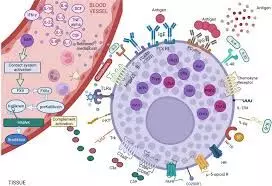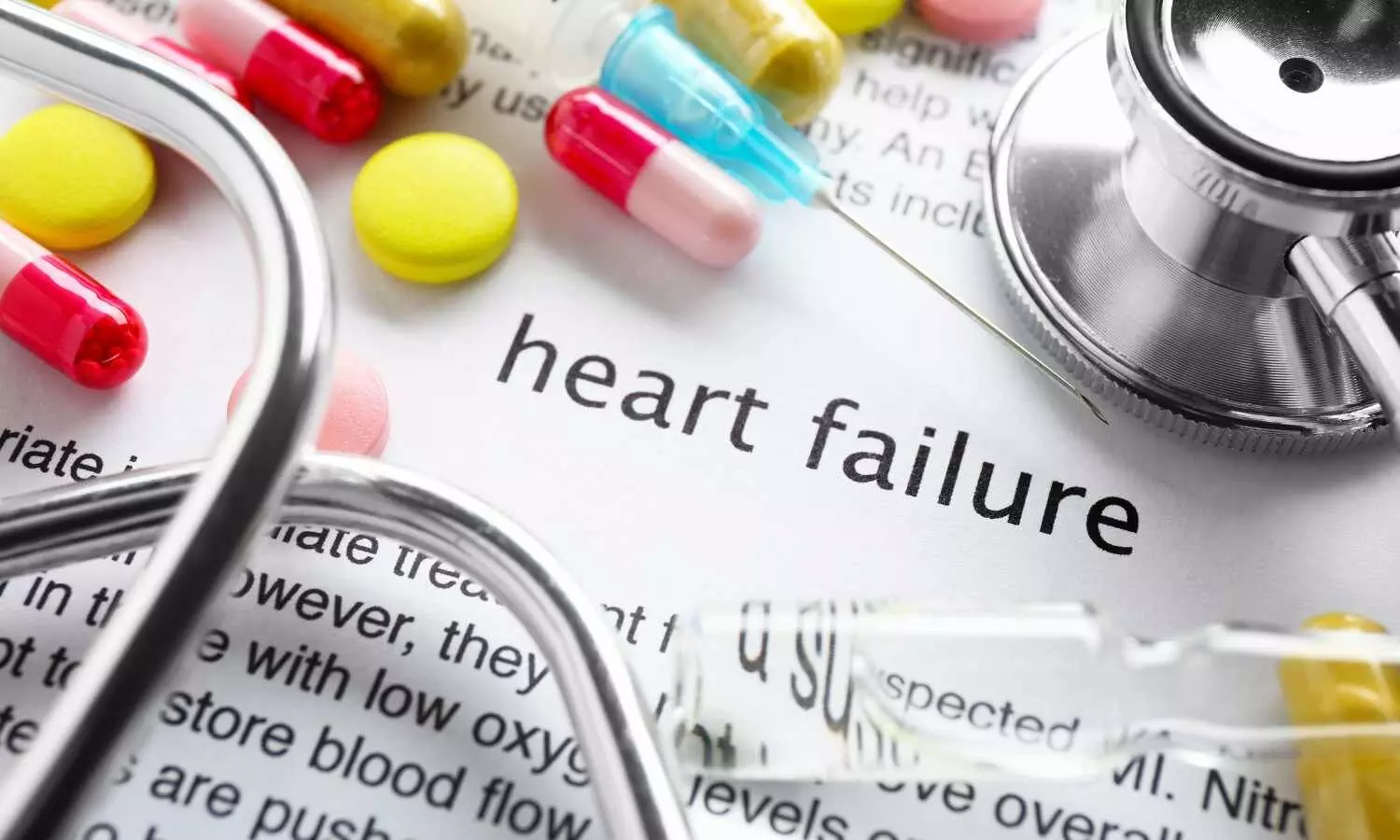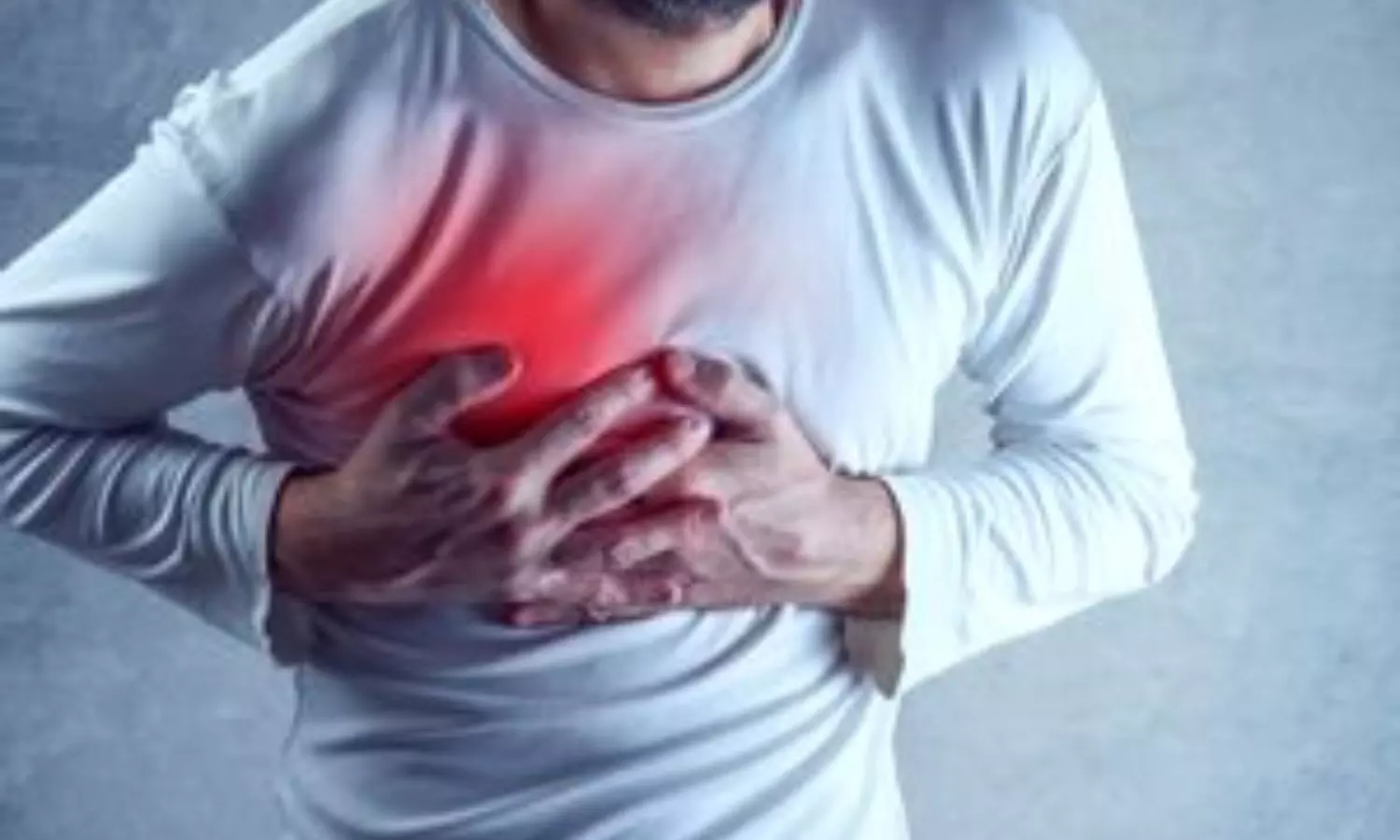Risk-factor changes could prevent the majority of sudden cardiac arrests
Powered by WPeMatico
Powered by WPeMatico
Powered by WPeMatico
Powered by WPeMatico

Shahjahanpur: In an unfortunate incident, a 26-year-old nurse allegedly committed suicide by giving herself an overdose of anaesthesia at her house on the campus of a private medical college in Uttar Pradesh’s Shahjahanpur, police said on Monday.
According to a UNI report, Superintendent of Police Rajesh Dwivedi said Aarti Deval completed her nursing course from Varun Arjun Medical College, a private institute in Tilhar area of the district. She was employed at the medical college and stayed in a house on its campus.
When she did not report for duty on Monday, her colleagues went to her residence and saw that the room door was locked from inside, police said.
Also Read:25-year-old nurse stabbed to death in Patna
Police reached the spot and broke open the door to find Deval’s body.
According to a Amar Ujala news report, the victim’s father, Mahesh Deval, said that his daughter Aarti Deval worked as a staff nurse in Varun Arjun Medical College. She lived in room number 44 on the first floor of the girls’ hostel. He used to talk to his daughter daily. He called his daughter Aarti at 7 am on Monday, but she did not pick up the phone.
According to the initial investigation, she took an excessive dose of anaesthesia, which led to her death, an officer said, reports UNI.
The body has been sent for post-mortem examination, and the reason behind Deval taking the extreme step is being ascertained, he added.
Also Read:25-year-old Bhopal nurse kills self with overdose of anesthesia
Powered by WPeMatico

An Instagram post claims that Drinking Raisin Water Can Purify Blood in 30-45 Days. The claim is FALSE.
In an Instagram post, it is claimed that Drinking Raisin Water Can Purify Blood in 30-45 Days. The post by user knowledgebyfact says, “Drinking raisin water daily with empty stomach for 30–45 days. It helps to remove acne / pimples providing glowing skin. It works as a blood purifier.”
The post can be accessed here.
The claim is FALSE. There is no scientific evidence or medical consensus to back the claim by the user that Drinking Raisin Water Can Purify Blood in 30-45 Days.
The kidneys are essential for blood purification, filtering about half a cup of blood every minute to remove waste and excess water, which are excreted as urine.
When kidney function fails, blood purification is carried out through specialized therapies outside the body. These treatments, used when standard methods like medication or surgery are insufficient, eliminate toxins and harmful substances from the bloodstream via techniques such as dialysis, filtration, or adsorption. These methods act rapidly and are primarily used in three medical scenarios: emergency situations (e.g., plasmapheresis to remove toxins), life-sustaining treatments (e.g., hemodialysis for kidney failure), and managing immune or metabolic conditions (e.g., immunoadsorption for autoimmune disorders).
Raisins are a nutritious snack with a low-to-moderate glycemic index, making them a healthy option for maintaining blood sugar levels. They are linked to better diet quality and may help reduce appetite. The phenolic compounds in raisins give them antioxidant properties, which can support cardiovascular health. Additionally, raisins promote good oral health due to their antibacterial effects, low adherence to teeth, and ability to maintain an optimal oral pH. While raisins appear to have benefits for colon function, further research is needed to fully understand their impact.
While raisins offer nutritional benefits, there is no scientific evidence that raisin water can purify, detoxify or cleanse the blood that too in in 30-45 Days. Hence, the claim by user is FALSE
Raisins, packed with natural sugars, fiber, and antioxidants, have been increasingly recognized for their potential role in promoting overall well-being. A review published in the Journal of Nutrition and Health reported that consuming raisins, when compared to other carbohydrate-rich snacks with equal caloric value, can lead to reductions in LDL (bad) cholesterol and blood pressure, and is associated with a lower risk of cardiovascular disease.
Similarly, Raisins offer a wide range of health benefits. A study by Margaret J. Schuster et. al. found that consuming raisins offers several health benefits, contributing to overall wellness and helping prevent various chronic conditions such as cardiovascular disease, type 2 diabetes mellitus, gastrointestinal disorders, and dental caries.
Raisins offer some health benefits and may aid in preventing certain chronic conditions, but no scientific evidence or medical consensus supports the user’s claim that raisin water can purify the blood.

In a conversation with Dr Poojitha Byreddy, Senior Haematologist, CARE Hospitals, Hi-tech City, Hyderabad, she said, “Some people believe that drinking raisin water can clean or ‘purify’ the blood in 30 to 45 days, but there is no medical proof for this. Our body already has a natural way of removing waste and toxins through the liver and kidneys. While raisins do have healthy nutrients like iron and antioxidants, raisin water alone cannot clean your blood.
It’s important to remember that no single food or drink can change how your blood works. Eating a balanced diet and staying healthy is more effective. Always talk to a doctor if you have any concerns about your blood.”

Dr Imran Khan, Senior Consultant – Internal Medicine, CARE Hospitals, Musheerabad, Hyderabad said, “Raisin water might help with digestion and give your body some energy, but it won’t ‘purify’ your blood. The idea that a drink can clean your blood is a common myth and not backed by science. Your liver and kidneys already do that job naturally every day. Good health doesn’t come from just one drink. It comes from eating a variety of healthy foods, drinking enough water, and staying active. If you are worried about your health or have specific problems, it’s best to speak with a doctor rather than relying on home remedies.”
The claim that drinking raisin water can “purify the blood” is false. Raisin water may offer hydration and health benefits. However, the claim that it can purify blood in 30-45 Days is not supported by any scientific evidence or medical consensus.
Hence, the claim is FALSE.
Powered by WPeMatico

Ranchi: The Jharkhand High Court on Monday stayed the state government’s order removing Dr Raj Kumar as the Director of the Rajendra Institute of Medical Sciences (RIMS), Ranchi, with immediate effect.
The court observed that the manner in which Dr Raj Kumar was removed was legally untenable, stating that a stigmatic order could not be issued without following due process, news agency PTI reported.
On April 17, Jharkhand Health Minister and RIMS Governing Council Chairman Irfan Ansari issued an order relieving Dr Raj Kumar from his post.
The government order cited alleged non-compliance with directives issued by the Council of Ministers, the Governing Council, and the Health Department, and described his service as Director as unsatisfactory.
Also Read:Former RIMS Director Moves HC over Dismissal
Referring to the RIMS manual, the government order stated that Dr Raj Kumar was being removed with immediate effect, with three months’ salary and allowances. It also mentioned that the decision had the approval of Chief Minister Hemant Soren.
Dr Raj Kumar challenged the removal in the High Court. In a strongly worded reaction, he termed the move “autocratic” and said he was taken by surprise.
Hearing the petition on Monday, Justice Deepak Roshan stayed the government’s order and issued notices to the state government and other parties, seeking replies through affidavits, reports PTI.
The court remarked that proper procedure must be followed for such removal, emphasising that no individual can be dismissed in a stigmatising manner without being heard.
The next hearing is scheduled for May 6.
The sudden removal of Dr Raj Kumar from the post of RIMS Director had sparked a major political controversy in Jharkhand.
Leader of Opposition in the Jharkhand Assembly, Babulal Marandi, alleged that Dr Raj Kumar was ousted for refusing to clear payments of several crores of rupees to private diagnostic centres under pressure from the Health Minister and officials.
Dr Raj Kumar was appointed RIMS Director on January 31, 2024. Prior to that, he served as a professor in the Department of Neurology at Sanjay Gandhi Post Graduate Institute of Medical Sciences, Lucknow.
Medical Dialogues had earlier reported that Former Director of the Rajendra Institute of Medical Sciences (RIMS), Ranchi, Dr. Rajkumar, has approached the Jharkhand High Court seeking justice after his abrupt removal from the post. In his petition, he has strongly contested the allegations that led to his removal, calling them entirely baseless and unjust.
Also Read:RIMS Director removed after Governing Body order
Powered by WPeMatico

Tryptase is the most commonly used biomarker for diagnosing anaphylaxis; however, it has limited sensitivity. A recent systematic review found its sensitivity to be only 49%, raising concerns about potential misclassification of anaphylaxis cases despite its status as the most reliable current marker.
Anaphylaxis is a life-threatening allergic reaction commonly triggered by food, venom, or drugs. Clinical criteria are central to diagnosing anaphylaxis. However, laboratory biomarkers could provide valuable confirmation when clinical diagnosis is challenging. They aimed to evaluate key biomarkers including tryptase, histamine, platelet-activating factor (PAF), PAF-acetylhydrolase (PAF-AH), and urinary prostaglandin D2 (PGD2) for their diagnostic utility in anaphylaxis. A systematic review was conducted following PRISMA-DTA guidelines. Studies published between 2004 and 2024 from Embase and MedLine were included if they evaluated the diagnostic test accuracy of tryptase, histamine, PAF, PAF-AH, or urinary PGD2 in confirmed anaphylaxis cases. Pooled sensitivity and specificity estimates were calculated using the diagmeta package in R. Results: Twenty-eight studies with 18,749 patients were included, of which 3,329 had anaphylaxis. Tryptase was the most frequently studied biomarker (24 studies), with a pooled sensitivity and specificity of 0.49 and 0.82, respectively. Histamine had a pooled sensitivity of 0.76 and specificity of 0.69. Limited data were available for PAF, PAF-AH, and urinary PGD2. Studies suggest that tryptase remains the most widely used and accessible biomarker for diagnosing anaphylaxis mainly using the “Rule of Twos” diagnosis strategy. Histamine and urinary PGD2 show potential, though their application is limited by practical challenges. Further research is needed to establish the diagnostic roles of PAF and PAF-AH, particularly in non-IgE mediated anaphylaxis pathways.
Reference:
Khalaf R, Prosty C, Davalan W, Abrams E, Kaouache M, Ben-Shoshan M. Diagnostic Utility of Biomarkers in Anaphylaxis: A Systematic Review and Meta-Analysis. J Allergy Clin Immunol Pract. 2025 Apr 14:S2213-2198(25)00362-9. doi: 10.1016/j.jaip.2025.04.008. Epub ahead of print. PMID: 40239922.
Keywords:
Tryptase, limited, sensitivity, Anaphylaxis, Biomarker, claims, study, PAF; PAF-AH; anaphylaxis; biomarkers; diagnosis; histamine; tryptase, Khalaf R, Prosty C, Davalan W, Abrams E, Kaouache M, Ben-Shoshan M. Diagnostic
Powered by WPeMatico

A new study published in The New England Journal of Medicine showed that a single dosage of the antiviral baloxavir marboxil (Xofluza) reduced the rate of influenza virus transmission to household contacts.
Because baloxavir marboxil (baloxavir) quickly decreases influenza virus shedding, it may also lessen transmission. Neuramaminidase inhibitor therapy studies have not provided enough proof that they stop transmission to contacts. The use of baloxavir in practical public health strategies is limited by the lack of data regarding its efficacy, effectiveness, appropriate dose administration, or duration of use for the treatment or post-exposure prophylaxis of novel influenza A viruses of pandemic potential, including the highly pathogenic avian influenza A (H5N1) virus. In order to fill the gap in the literature, Arnold Monto and team carried out this investigation.
Within 48 hours of the initial symptoms, individuals aged 5 to 64 with an influenza-positive index were randomized 1:1 to receive either baloxavir or a placebo. By day five, the main outcome was the spread of influenza virus from an index patient to a household contact. By day five, the first secondary end goal was the spread of the influenza virus, which caused symptoms.
As a whole, 1,457 index patients and 2,681 household contacts were included during the 2019–2024 influenza seasons. Nearly, 726 index patients were randomized to the baloxavir group, and 731 to the placebo group. With an adjusted relative risk reduction of 29%, baloxavir significantly reduced the transmission of laboratory-confirmed influenza by day 5 when compared to placebo.
Although the difference was not statistically significant, the adjusted incidence of influenza virus transmission by day 5 that caused symptoms was 5.8% with baloxavir and 7.6% with placebo. During the follow-up period, 7.2% of the index patients in the baloxavir group developed drug-resistant viruses; no resistant viruses were found in household contacts. There were no new warning signs found.
Overall, compared to placebo, treatment with a single oral dosage of baloxavir resulted in a decreased rate of influenza virus transmission to close contacts. Across age categories, seasons, influenza types (A[H1N1pdm09], A[H3N2], and B), durations between symptom start and baloxavir or placebo administration, and geographical locations, there was a difference in the transmission incidence favoring baloxavir.
Source:
Monto, A. S., Kuhlbusch, K., Bernasconi, C., Cao, B., Cohen, H. A., Graham, E., Hurt, A. C., Katugampola, L., Kamezawa, T., Lauring, A. S., McLean, B., Takazono, T., Widmer, A., Wildum, S., & Cowling, B. J. (2025). Efficacy of baloxavir treatment in preventing transmission of influenza. The New England Journal of Medicine, 392(16), 1582–1593. https://doi.org/10.1056/nejmoa2413156
Powered by WPeMatico

A new study published in the Journal of American Medical Association showed that a noise-adapted AI-ECG model successfully estimated heart failure risk using only lead I ECGs across diverse multinational cohorts. This suggests a potential strategy for heart failure (HF) risk stratification that could be applied using wearable and portable ECG devices, warranting further prospective studies.
Single-lead electrocardiograms (ECGs) may be recorded using portable equipment, which might allow for extensive community-based risk assessment. Thus, to determine if an artificial intelligence (AI) system can predict heart failure risk from noisy single-lead electrocardiograms, Lovedeep Dhingra and colleagues carried out this investigation.
A retrospective cohort analysis assessed persons without heart failure at baseline from UK Biobank, YNHHS, and ELSA-Brasil, utilizing outpatient ECG data. The data were evaluated between September 2023 and February 2025, with the major exposure being the AI-ECG-predicted risk of left ventricular systolic dysfunction (LVSD).
Lead I ECGs were separated to mimic wearable device signals, and a noise-adaptive AI-ECG model trained to identify LVSD was used. The model’s relationship with new-onset heart failure (first HF hospitalization) was investigated. Its predictive ability was compared to the PREVENT and PCP-HF risk scores using the integrated discrimination improvement, Harrell C statistic, and net reclassification improvement.
Baseline ECGs were obtained from 192 667 YNHHS patients, 42 141 UKB participants, and 13 454 ELSA-Brasil participants. 31 (0.2%) in ELSA-Brasil, 46 (0.1%) in UKB, and 3697 (1.9%) in YNHHS experienced heart failure over a median (IQR) of 4.2 (3.7-4.5) years, 3.1 (2.1-4.5) years, and 4.6 (2.8-6.6) years, respectively.
Regardless of age, sex, comorbidities, or competing risk of mortality, a positive AI-ECG screening result for LVSD was linked to a 3- to 7-fold increased risk for HF, and every 0.1 increase in the model likelihood was linked to a 27% to 65% greater hazard across cohorts. The discrimination of AI-ECG for new-onset HF was 0.828 in ELSA-Brasil, 0.723 in YNHHS, and 0.736 in UKB.
Across cohorts, integrating AI-ECG predictions beside PCP-HF and PREVENT equations resulted in a higher Harrel C statistic. AI-ECG improved integrated discrimination by 0.091 to 0.205 vs PCP-HF and 0.068 to 0.192 vs PREVENT, as well as net reclassification by 18.2% to 47.2% vs PCP-HF and 11.8% to 47.5% vs PREVENT.
Overall, a noise-adapted AI-ECG model predicted HF risk using lead I ECGs across global cohorts, indicating a viable HF risk-stratification technique that needs to be studied prospectively employing wearable and portable ECG devices.
Source:
Dhingra, L. S., Aminorroaya, A., Pedroso, A. F., Khunte, A., Sangha, V., McIntyre, D., Chow, C. K., Asselbergs, F. W., Brant, L. C. C., Barreto, S. M., Ribeiro, A. L. P., Krumholz, H. M., Oikonomou, E. K., & Khera, R. (2025). Artificial intelligence-enabled prediction of heart failure risk from single-lead electrocardiograms. JAMA Cardiology. https://doi.org/10.1001/jamacardio.2025.0492
Powered by WPeMatico

China: A recent study has highlighted the potential role of the fibrinogen-to-albumin-to-globulin ratio (FAGR) as a prognostic marker in patients with ST-elevation myocardial infarction (STEMI) undergoing emergency percutaneous coronary intervention (PCI).
The findings, published in Scientific Reports, indicate that FAGR proved to be a significant predictor of all-cause and cardiovascular mortality in patients with acute STEMI undergoing emergency PCI. A higher FAGR was associated with increased mortality rates, outperforming fibrinogen in prognostic accuracy (ROC curve of 0.720 for all-cause mortality and 0.726 for cardiovascular mortality), highlighting its potential as a valuable prognostic marker in STEMI patients.
STEMI is a life-threatening condition that requires immediate medical intervention to restore blood flow to the heart. Despite advancements in PCI, patient outcomes vary significantly, necessitating the identification of reliable prognostic indicators. The researchers note that while the fibrinogen-to-albumin-to-globulin ratio has been recognized for its association with coronary artery disease (CAD), its role in acute STEMI remains insufficiently explored. To bridge this gap, Lixing Chen, Department of Cardiology, Kunming Medical University First Affiliated Hospital, Kunming, Yunnan Province, China, and colleagues aimed to assess the prognostic potential of FAGR in STEMI patients.
For this purpose, the researchers enrolled 1,042 STEMI patients who underwent emergency PCI at the First Affiliated Hospital of Kunming Medical University between June 2018 and January 2023. Based on the median FAGR (2.44), patients were categorized into low and high FAGR groups. The predictive value of FAGR for all-cause and cardiovascular mortality was assessed using Kaplan–Meier plots, restricted cubic spline regression, Cox survival analyses, and time-dependent ROC analyses.
The key findings of the study were as follows:
The findings suggest that FAGR is a valuable prognostic indicator in STEMI patients undergoing emergency PCI. According to the authors, the study, the first to report its prognostic significance in STEMI, demonstrated that patients with a higher FAGR had greater all-cause and cardiovascular mortality than those with a lower FAGR. Moreover, FAGR emerged as an independent predictor of mortality, showing superior predictive accuracy compared to fibrinogen.
“However, as a single-center retrospective study, it has limitations, including potential data bias despite adjustments for confounding factors. Further prospective research is needed to validate these findings and establish FAGR’s role in clinical practice,” the authors concluded.
Reference:
Yang, S., Zhou, Y., Xu, D., Dong, Y., Tang, H., Jing, P., Lu, Y., Yuan, M., Zhao, Z., & Chen, L. (2025). The associations between the FAGR and all-cause and cardiovascular mortality in patients with STEMI. Scientific Reports, 15(1), 1-9. https://doi.org/10.1038/s41598-025-93951-0
Powered by WPeMatico
